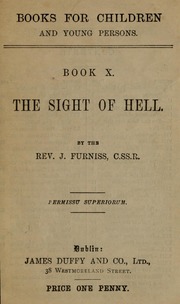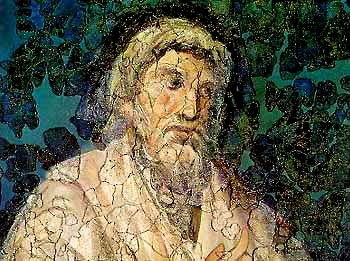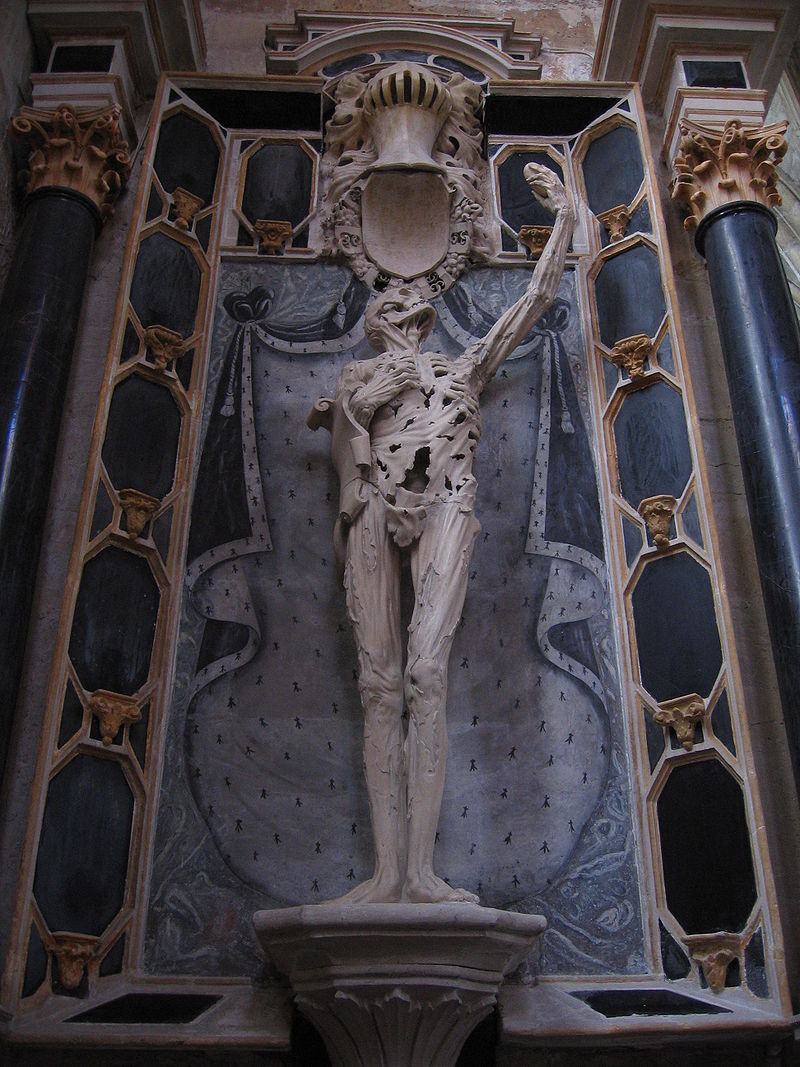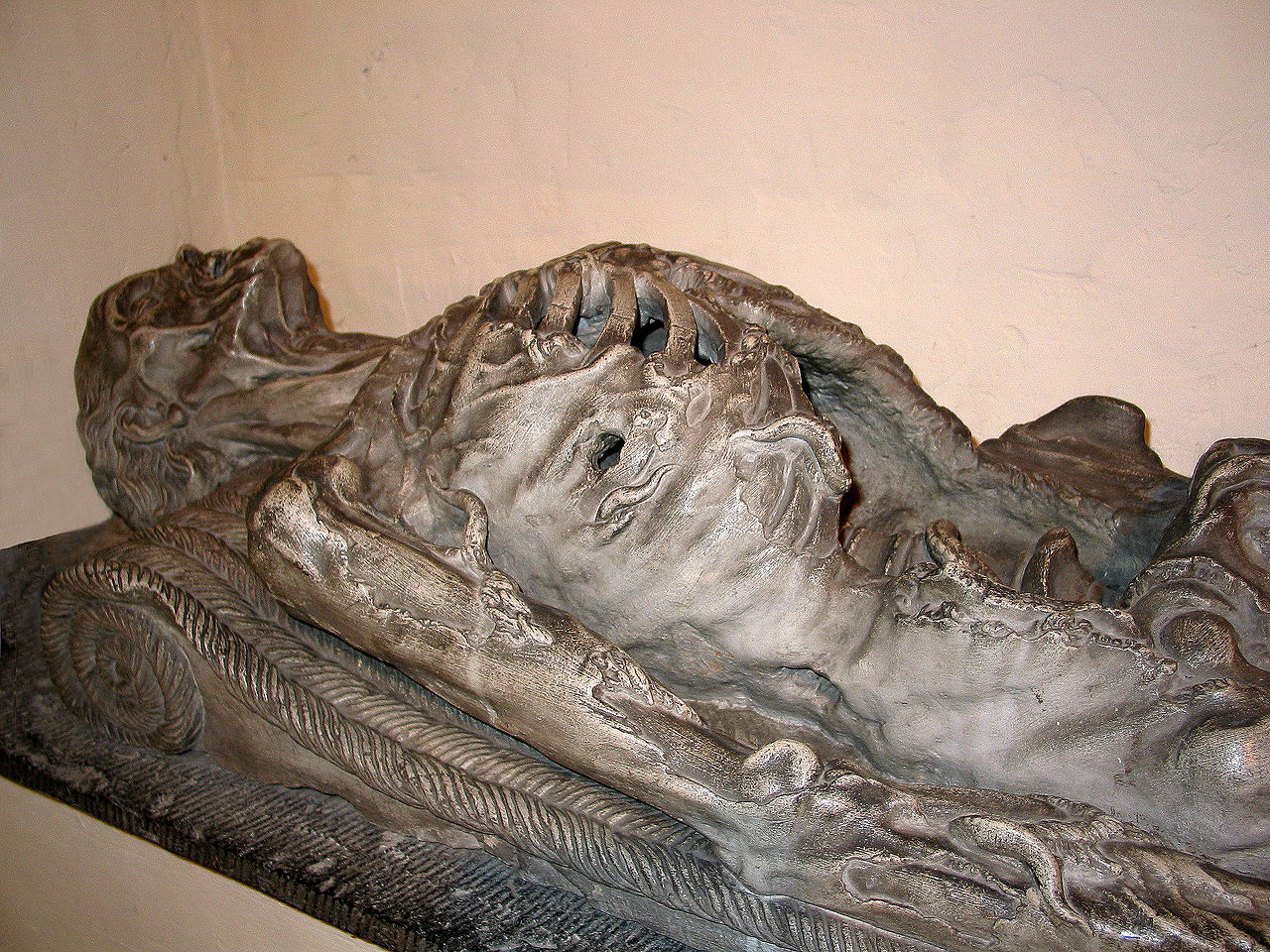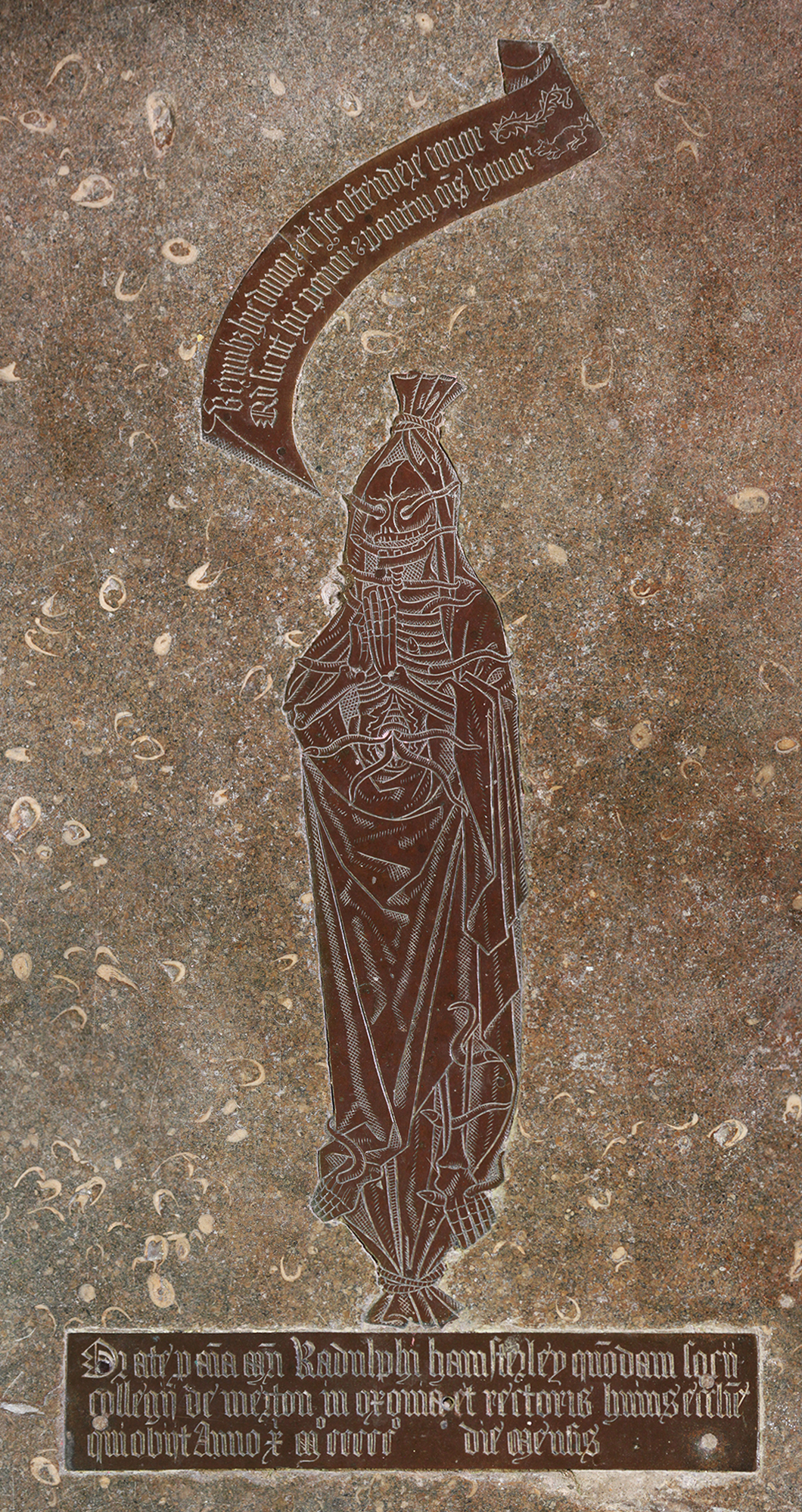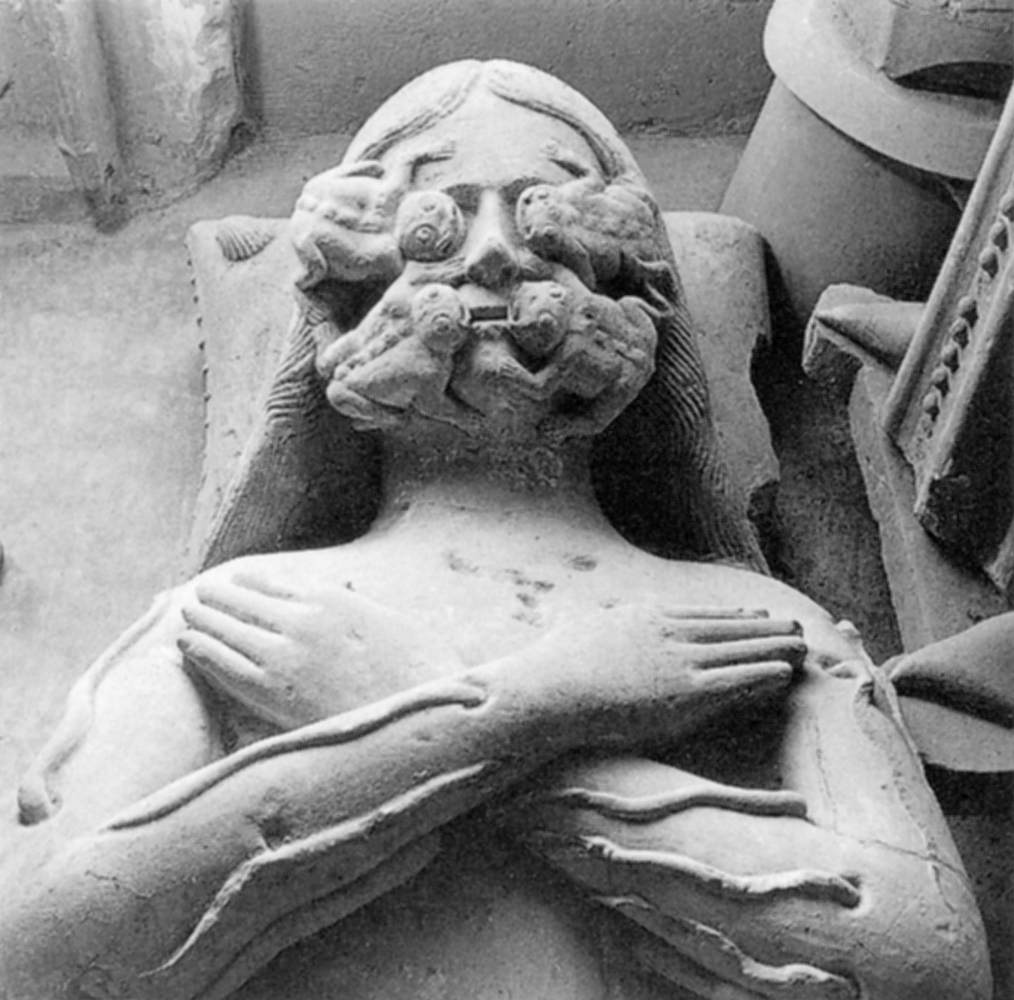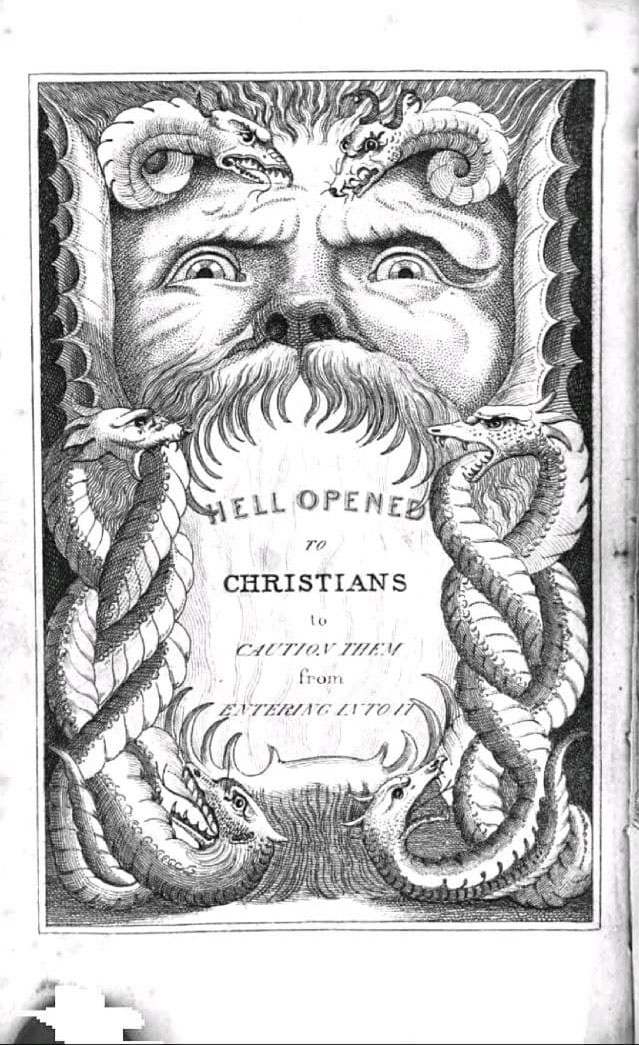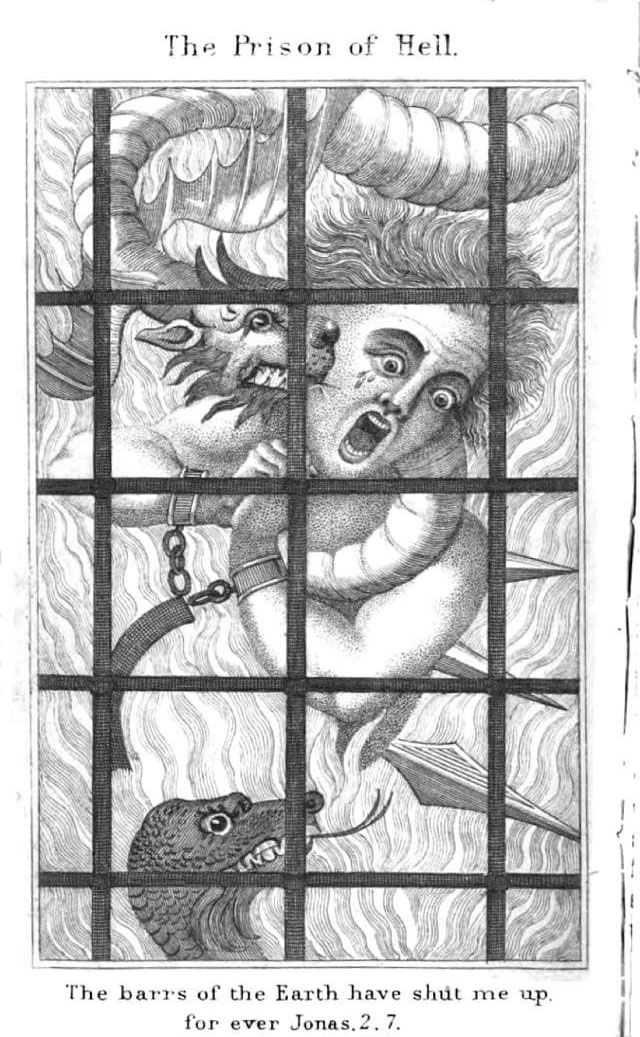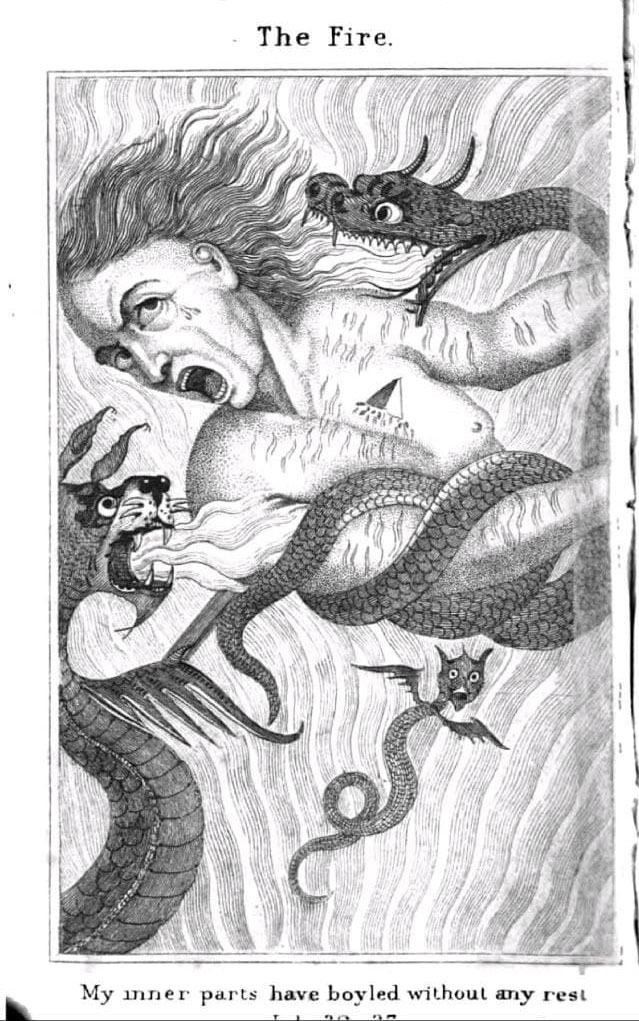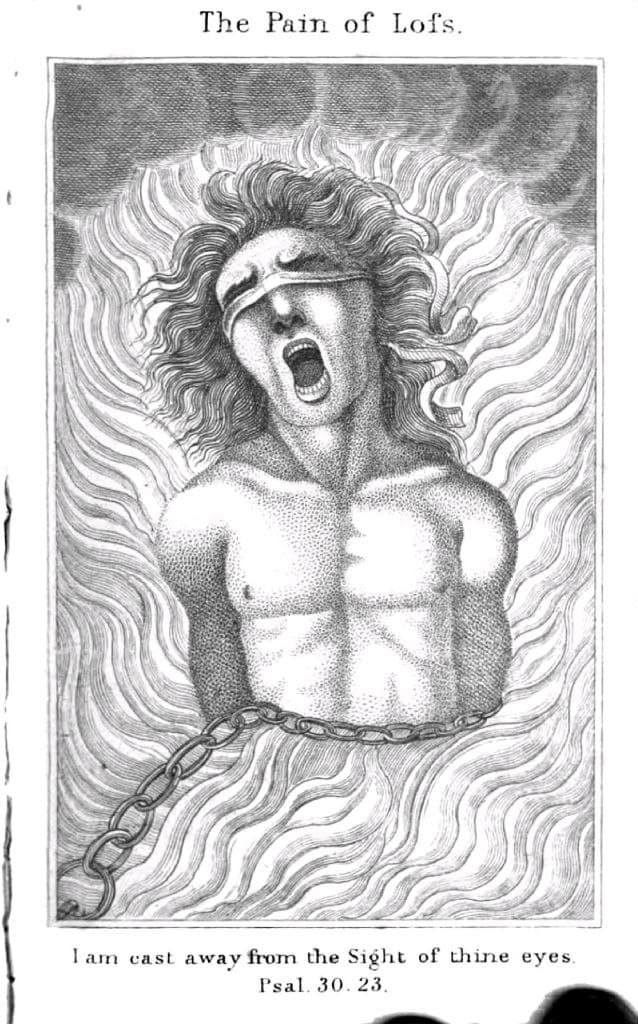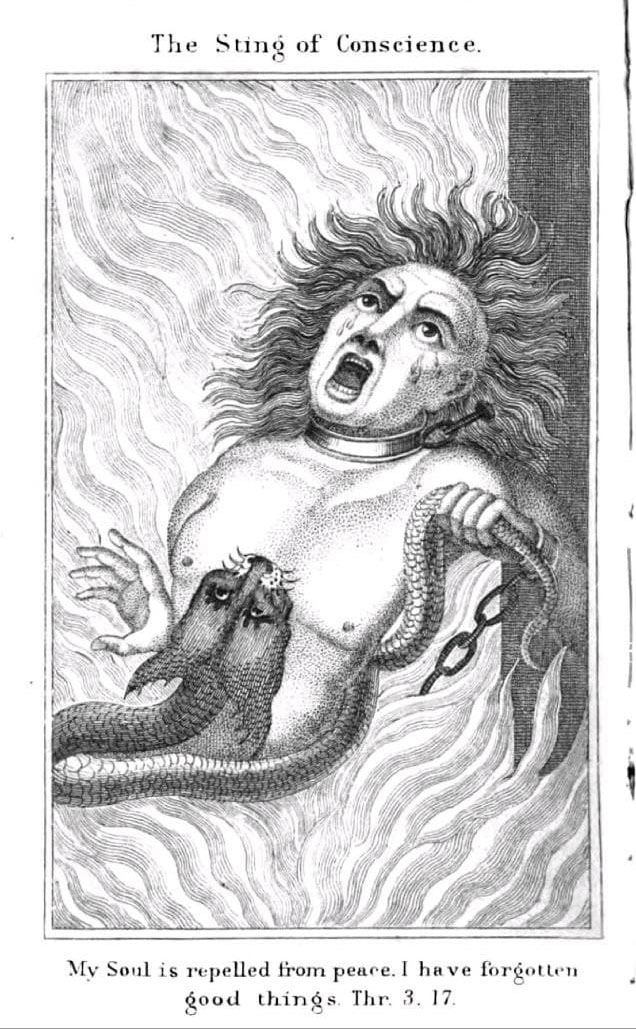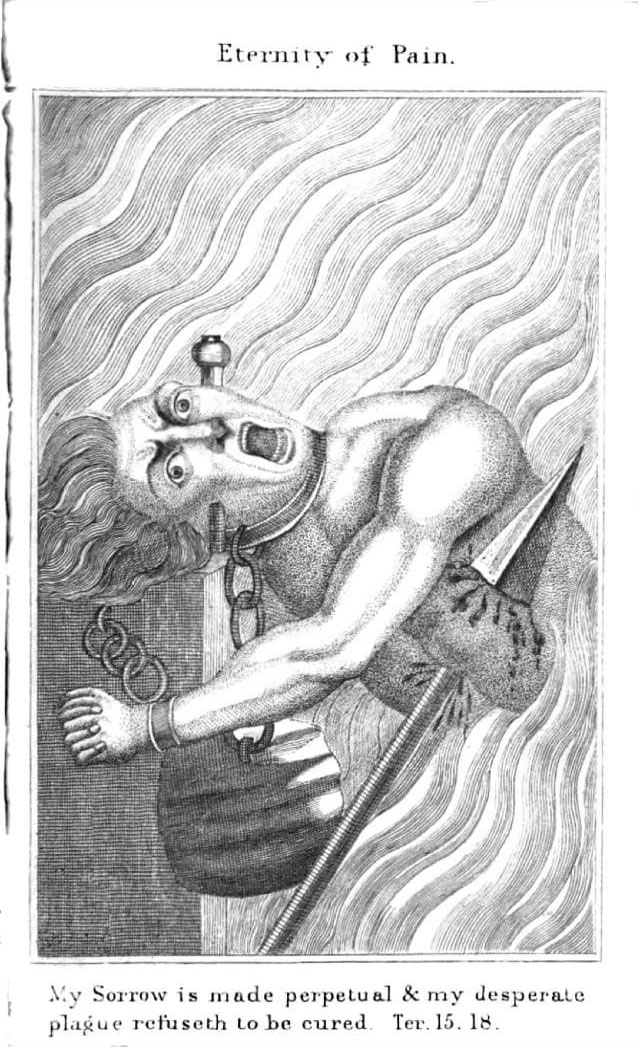Ep. 35 -WORMS
Manage episode 318110508 series 2865672

Oh, Jacob has been waiting for this one for a while—the worms of hell!
Naturally, we open up with a brief discussion of the tequila worm, which was added as a marketing gimmick for low-end tequila. However, in any discussion of “worms+beverages” it’s going to come up.
Jamin recommends this version of the “Dirt Cake,” classic kid’s party fare. Related, the slightly more alarming “Kitty Litter Cake.”
Some low-key hell news this week from “The Conversation,” an article by Christopher Douglas on “demoncrats,” crazy conspiracies, and the intersection of early middle ages apocalyptic thinking and modern politics.
Circling back a bit on our Christmas gift episode, we had a chance to open up our sample pack from “Hausovphaedra“, filled with a half dozen flasks of perfumes. I believe we tried “In The Grave,” “Madame Krampus,” “Von Krampus,” “Victorian Mourning,” a halloween one that I can’t recall the name of (but it involved Jack o Lanterns). (and I’ve probably gotten all the names wrong.) All of them were quite fun to try, and we were particularly taken with “In The Grave,” which had notes of grass and earth that were remarkable. Victorian Mourning” was dusty and floral, maybe a little overwhelming in that, but evocative of what it said on the bottle….maybe better as an incense than perfume.. The hosts generally liked the two Krampus perfumes as our #2 favorites, but we’ve gone back and forth over them.) It was a lot of fun to unpack, and we’re going to go back for more Quiet Grave and Krampus blends once the doors open again. Thank you, Hausovphaedra!
A few random resources we used this week – afterlife.co.nz (a blog about conditional immortality), and the encyclopedic Hell-on-line.org.
Now, on to the worms…
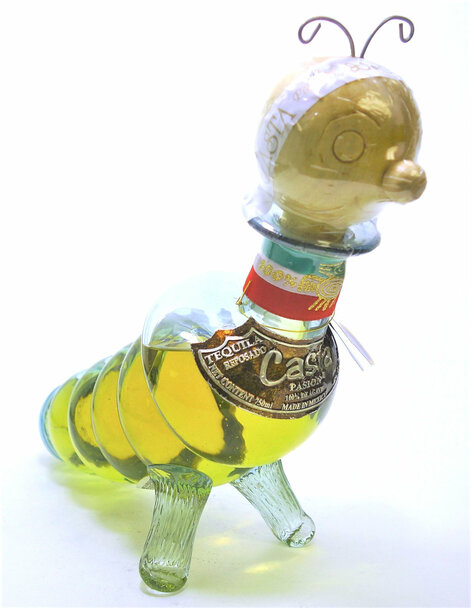
The Sight of Hell
Whatever the opposite of a delight is, that is John Furniss’s The Sight of Hell, an 1861 booklet describing the horrors of hell for children. In a certain “dead baby joke” sense of the word, it’s a fun read, 38 pages of torture and torment, written to be read aloud to children. The chapter on worms, is a part of a short list of the nine torments of hell, which are likely inspired directly or indirectly by the Elucidarium of Honorius, a back-pocket guide to hellfire sermons from 1098. It’s hard to find this one in English, but I did feed a Latin copy through Google Translate. The results are a bit choppy but you may be able to read some of the original text through the algorythm.
Mark 9:48
38 And John answered him, saying, Master, we saw one casting out devils in thy name, and he followeth not us: and we forbad him, because he followeth not us.
39 But Jesus said, Forbid him not: for there is no man which shall do a miracle in my name, that can lightly speak evil of me. 40 For he that is not against us is on our part.
41 For whosoever shall give you a cup of water to drink in my name, because ye belong to Christ, verily I say unto you, he shall not lose his reward. 42 And whosoever shall offend one of these little ones that believe in me, it is better for him that a millstone were hanged about his neck, and he were cast into the sea. 43 And if thy hand offend thee, cut it off: it is better for thee to enter into life maimed, than having two hands to go into hell, into the fire that never shall be quenched: 44 Where their worm dieth not, and the fire is not quenched.
45 And if thy foot offend thee, cut it off: it is better for thee to enter halt into life, than having two feet to be cast into hell, into the fire that never shall be quenched: 46 Where their worm dieth not, and the fire is not quenched. 47 And if thine eye offend thee, pluck it out: it is better for thee to enter into the kingdom of God with one eye, than having two eyes to be cast into hell fire: 48 Where their worm dieth not, and the fire is not quenched.
49 For every one shall be salted with fire, and every sacrifice shall be salted with salt.
This passage is argued on both sides as a text supporting and undermining the idea of eternal damnation. Rethinking Hell, a website/podcast focused on conditional ahnihilationism – that is, the idea that while there is eternal life in the form of heaven, there is no eternal punishment in hell…souls that don’t make it into heaven eventually cease to exist (though there may be SOME hellfire, it’s not necessarily eternal hellfire.)
Isaiah 66:24
“As the new heavens and the new earth that I make will endure before me,” declares the Lord, “so will your name and descendants endure. 23 From one New Moon to another and from one Sabbath to another, all mankind will come and bow down before me,” says the Lord. 24 “And they will go out and look on the dead bodies of those who rebelled against me; the worms that eat them will not die, the fire that burns them will not be quenched, and they will be loathsome to all mankind.”
in general, Isaiah 66 describes a great victory for Israel, and defeat of that nation’s foes. It’s pretty solidly in the apocalyptic language….and is echoed later by Jesus, but since this describes a great victory, and the bodies of the slain enemies, saying the “worm that will not die” implies eternal torment doesn’t seem valid. Generally, Old Testament era Judaism didn’t have much of an afterlife, people died and then waited until the millenium to be reborn, though that depends largely on who’s writing what when.
Gilgamesh (again)
Quick reference to Gilgamesh (or Bilgamesh) and the Netherworld, an older poem that was folded into Tablet 12 of the Epic of Gilgamesh. In this story, Gilgamesh sends his best buddy Enkidu to the underworld, from which of course nothing returns. Depending on the translation, the wraith of Enkidu reports that it has been beset by the worms that devour all things, an early example of worms and the underworld. This is completely in keeping with the Jewish “Sheol” afterlife, a synonym for the grave, which at its best stores bodies for a promised millenial ressurection. At worst, it’s just…where the dead go, which is the tone of the Mesopotamian underworld generally.
Lactantius
Lucius Caecilius Firmianus “Lactantius” was a 300-ish Christian author, advisor to Constantine, who had a lot of things to day about what happens to bad people who persecute Christians, although he’s well known for his “Institutions Divinae” which helped explain Christianity to paganism. We read about him in John Casey’s After Lives. Mr., Casey suggests that some of Lactantius’s more colorful descriptions might have fed into some of the tortures that visitors to Hell would encounter over the next 1720 years. In particular, Mr. Casey recommends you to the death of Gaius Galerius Valerius Maximianus:
“And now when Galerius was in the eighteenth year of his reign, God struck him with an incurable disease. A malignant ulcer formed itself in the secret parts and spread by degree. The physicians attempted to eradicate it . . . But the sore, after having been skimmed over, broke again; a vein burst, and the blood flowed in such quantity as to endanger his life . . . The physicians had to undertake their operations anew, and at length they cauterized the wound . . . He grew emaciated, pallid, and feeble, and the bleeding then stanched. The ulcer began to be insensible to the remedy as applied, and gangrene seized all the neighboring parts. It diffused itself the wider the more the corrupted flesh was cut away, and everything employed as the means of cure served but to aggravate the disease. The masters of the healing art withdrew. Then famous physicians were brought in from all quarters; but no human means had any success . . . and the distemper augmented. Already approaching to its deadly crisis, it had occupied the lower regions of his body, his bowels came out; and his whole seat putrefied. The luckless physicians, although without hope of overcoming the malady, ceased not to apply fermentations and administer remedies. The humors having been repelled, the distemper attacked his intestines, and worms were generated in his body. The stench was so foul as to pervade not only the palace, but even the whole city; and no wonder, for by that time the passages from waste bladder and bowels, having been devoured by the worms, became indiscriminate, and his body, with intolerable anguish, was dissolved into one mass of corruption.”
A few web commentators have said that most likely Galerius died of a “Fournier gangrene,” and you can read more about that on RareDiseases.Org, which, blessedly, has no photographs of the condition. Those, also, may be found.
Halicephalobus mephisto
This little nematode, about .5 mm long, is the deepest-found multicellular organism ever, having been found over 2 miles under the surface of the world. It’s named after Mephistopheles, and has a rather pointy face. Beyond that, this “hellworm” has made researching actual hell worms somewhat more difficult.
Unrelated, please learn almost everything you need to know about the tongue-eating louse, and the Mongolian Death Worm, which probably isn’t.

The Apocalypse of Paul
I wonder why we didn’t call this the Apaulcolypse? It would have been totally in line with our sense of humor. Anyway, the Apaulcolypse was written possibly around 390, possibly in an Egyptian monastery, and riffs heavily on the Apocalypse of Peter. Overall it tells the story of how the wicked are judged, and how Paul brought weekends to hell (no really). A lot of punishments, Also included, a new devil named Temeluchus, and the general concept of pride being the source of all evil, which gets a LOT of play over the next 1000+ years. Good stuff, will return to it soon.
Also! Jacob was wrong, it WAS that Paul. Sort of. The Apaulcolypse is meant to be the vision given to Paul, although it’s not considered canon.
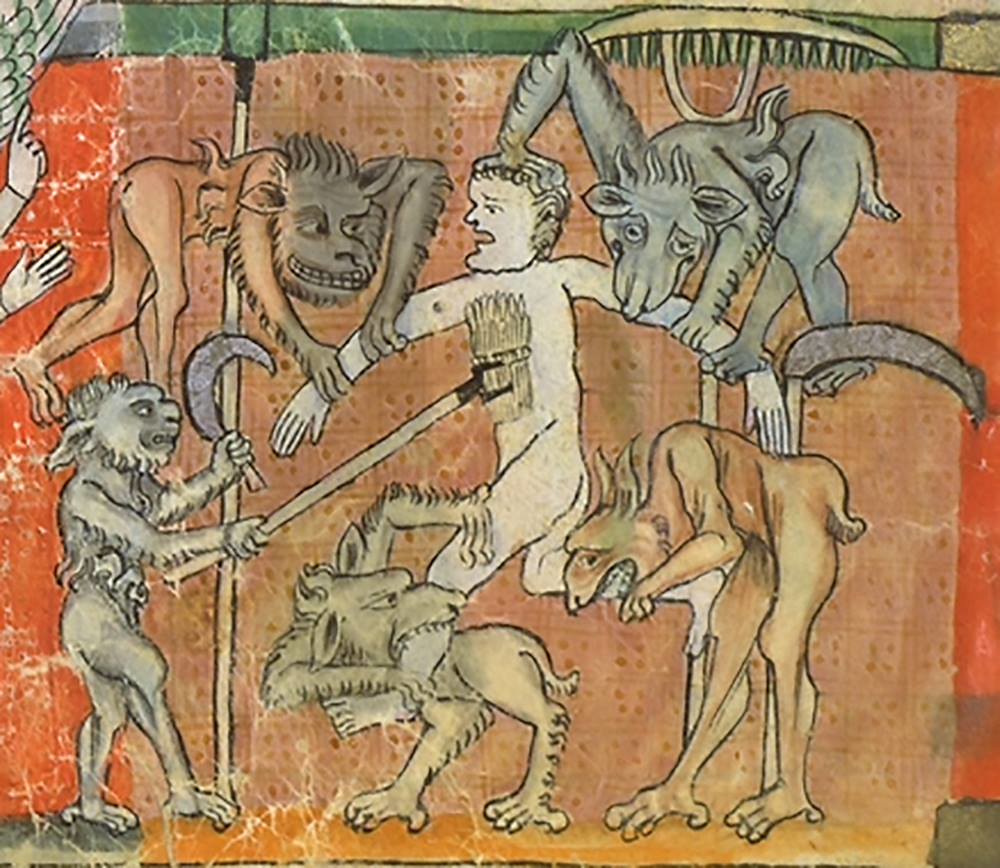
Apocalypse of Paul (Hell) ~1250, from the Bibliteque Municipale de Toulouse
Jesus Worm
The chronology of Jesus Worm got a little bit contested here at the Studio of the Vainglorious, and some of that ended up on the cutting room floor. A lot of the muddling is tied ino the revisionist prophecy of the Christian/New Testamental writing, a lens that assumes that the entire old testament leads up to Jesus (see “Reasons for Hope“) The old testament authors didn’t write the name “jesus” down in Psalms…they’re written many hundreds of years before, and (says Jacob) I think the author would be a little bit insulted by saying that they were about Jesus. Though they may have been about a Messiah to come, who may or may not have been Jesus. Who knows? But that’s outside the author’s perview. (end editorializing).
Psalm 22 is attributed to King David, who is a leader on his own, vastly smaller than the god who shepherds his people:
22 My God, my God, why hast thou forsaken me? why art thou so far from helping me, and from the words of my roaring?
2 O my God, I cry in the day time, but thou hearest not; and in the night season, and am not silent.
3 But thou art holy, O thou that inhabitest the praises of Israel.
4 Our fathers trusted in thee: they trusted, and thou didst deliver them.
5 They cried unto thee, and were delivered: they trusted in thee, and were not confounded.
6 But I am a worm, and no man; a reproach of men, and despised of the people.
…and certainly, in the joint shared-world fiction that is the bible, the character of Jesus says at least some of this on the cross.
The crimson worm – coccus ilicis – has a beautiful and sad life cycle (if that article is accurate, anything with that much traigos may have been tarted up..) and definitely deserves to be allegorized. Did Jesus compare himself to a worm that was crushed to make red scarlet dye? It’s good storytelling, but if he can throw around analogies like that while being crucified, that’s more impressive to me than the walking on water bit.
Ths turned really cynical. Next topic, please.

Hildi and the Worm
Surprisingly, there’s a good version of Hildegard’s “Scivias” on PBS Frontline’s website, which has more details from a pssage that we really just skimmed for worms. The illustrations are really incredibly fun, and the Healthy Hildegard site has some notes on reconstructing the text and details from its illustrations. We at this podcast do not know what Hildy meant when she was talking about vipers.What does your worm mean?
If you have previously, or after this episode, find yourself dreaming about worms, we recommend AloDreams.com which has an elaborate 16-element rubric for understanding what your worm means.Krimibhojana (worm-food) (but not in a nice way)
Hard to find solid information on this one, all web sources seem to have differences of opinion. But in the spirit of this podcast, we’ll go with the source that sounds the most horrible. Krimibhojana is one of a large number of hells available in the Hindu cosmology, specifically one where selfish people who don’t share with their elders/guests/the gods go…so a hell of gluttony, essentially. Also for people who destroys jewelry. I don’t know. Anyway, in Krimibhojana the sinner is thrown into a large lake filled with worms, turned into a worm, forced to eat worms, and ultimately be devoured by worms, for something along 100,000 years. If we’ve got this exciting realm wrong, well, I’m sure it’s accurate somewhere else on the internet.
To Hell with Don Bosco
“During the seven years I lived at the Oratory, not a boy died without Don Bosco predicting his death.” Well, this is either the result of oracular ability, OR the result of predicting EVERY boy’s death, in great detail. Given the colorful and redemptive tone of St. John Bosco’s Dream of Hell, the second seems a strong possibility. It opens with a toad devouring Bosco, (are we going to need to have an epsiode about toads?) then goes through an exhaustive list of the ways boys can sin, and where in hell they’ll end up when they inevitably do.
Bosco’s vision of hell was given to him in 1868, and is as efficacious in scaring impious little boys today as it was in 1868…promise.
Krimibhojana (worm-food) (but not in a nice way)
Hard to find solid information on this one, all web sources seem to have differences of opinion. But in the spirit of this podcast, we’ll go with the source that sounds the most horrible. Krimibhojana is one of a large number of hells available in the Hindu cosmology, specifically one where selfish people who don’t share with their elders/guests/the gods go…so a hell of gluttony, essentially. Also for people who destroys jewelry. I don’t know. Anyway, in Krimibhojana the sinner is thrown into a large lake filled with worms, turned into a worm, forced to eat worms, and ultimately be devoured by worms, for something along 100,000 years. If we’ve got this exciting realm wrong, well, I’m sure it’s accurate somewhere else on the internet.
Transi (or Cadaver Tombs)
Transi, AKA cadaver tombs, cadaver monuments, or momento mori monuments, are church/funerary monuments that depict, well, a cadaver. They were quite the thing in late Middle Ages England, 1250-1500, which as Victoria points out nicely parallels the glory days of the black death. Not entirely unrelated, in 2002 (?) Victoria and Jacob went to the Blanton Museum’s exhibit, “Dancing with Death,” which was amazingly not as morbid as you might imagine. It spoke to a time when people couldn’t kick death out of their lives, so they treated it like a performer in their play. More here.
Cadaver monument of Rene de Chalon, Bar-le-Duc France, photo by Ligier Richier
L’homme aux moulons (man eaten by worms), 16th century, photo by Jean-Pol Grandmont
Bonus! Hell Opened for Christians
This one didn’t make the cut because it leaned on the “worms as metaphor” idea rather than any sort of fun content that we’d enjoy talking with. But the illustrations are fun. These are the plates from Hell Opened for Christians to Caution Them from Entering Into It, 1845 by F. Pinamonti, published by the Catholic Book Society. Unsure of who did the illustrations, but they’re worth the price of admission (which is free.)
Also not making the list on account of being not terribly fun, “The Worm that dyeth Not, or Hell Torments in the Certainty and Eternity of Them, Plainly Difcovered in Feveral Sermons, preached on Mark Chap the 9th and the 48th, by that Painful and Laborious Minifter of the Gofpel, William Strong.” 1672, London.
81集单集
